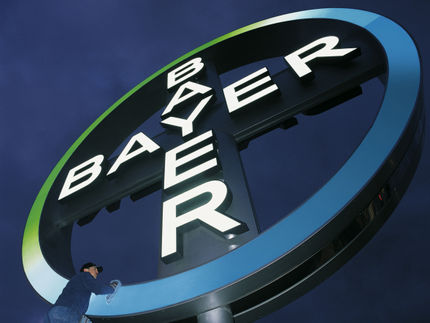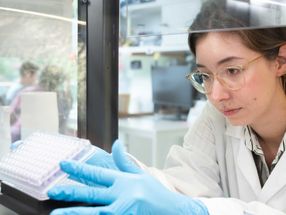Bayer confirms 2025 targets after solid start to the year
Five-year plan for Crop Science to strengthen the company
Advertisement
The Bayer Group saw a solid start to the year. “Our first quarter puts us in a good spot to deliver in a challenging and important year for the company,” CEO Bill Anderson said on Tuesday when presenting the company’s Quarterly Statement. He highlighted the substantial growth in earnings in the Pharmaceuticals Division. “That is an encouraging sign that our operating model is helping teams do more with less,” Anderson said. The company expects the division’s sales growth and profit margin to come in at the upper end of the range given in the full-year guidance. “We’re confident in the momentum of our launches and the fundamentals of our business,” he said, commenting on Pharmaceuticals’ prospects. At the same time, Bayer is closely monitoring the current geopolitical and economic uncertainties, and analyzing potential impacts on the company. CFO Wolfgang Nickl said: “Based on the current status of tariffs announcements and our mitigation measures, we expect to manage the impact, and we confirm our outlook at constant currencies for the full year 2025.”
Five-year plan for Crop Science to strengthen the company
Bayer has a plan in place to advance its strategic priorities, said Anderson, who had provided a detailed update on the progress being made at the Annual Stockholders’ Meeting in late April. Profitability at Crop Science was added as a focus area at the start of the year. On Tuesday, Bayer confirmed the mid-term ambition for Crop Science. The division is expected to achieve above-market growth and deliver more than 3.5 billion euros of incremental sales from innovation by 2029. By the same year, the division is targeting an EBITDA margin before special items in the mid-20s percentage range. Cash productivity is also set to increase, with Crop Science targeting a free operating cash flow of over 3 billion euros in 2029.
The division has a comprehensive strategy in place to achieve these goals, and has already begun executing it. As previously communicated, the company has launched a five-year plan to combat industry-wide cost pressures, especially in the crop protection business. The measures include streamlining the product portfolio, focusing research and development (R&D) on value-generating innovations, and optimizing the production network. In doing so, the Crop Science Division aims to not only improve its position in the mid-term but also increase resilience and adaptability across the entire organization to manage macroeconomic and geopolitical uncertainties.
With the global population reaching 10 billion in 2050, the future for agriculture lies in innovative solutions that enable farmers to produce more while reducing the environmental impact and restoring soil health. As the innovation leader of the industry, the Crop Science Division is committed to delivering new blockbuster products and providing tools that enable regenerative agricultural systems. Examples include the Preceon™ Smart Corn System, Vyconic™ soybeans, an industry-first trait package with tolerance to five herbicides, as well as the new herbicide icafolin.
“We are radically focusing on improving profitability, delivering top-notch innovation and leveraging new value pools. We are taking decisive action on our challenges, and we are focusing the business to deliver innovations faster than ever before,” said Rodrigo Santos, member of the Board of Management of Bayer AG and head of the Crop Science Division, at a webinar for investors.
Group sales level year on year
Group sales came in at 13.738 billion euros in the first quarter of 2025. After adjusting for currency and portfolio effects (Fx & portfolio adj.), sales were level with the prior-year quarter (minus 0.1 percent). There was a negative currency effect of 55 million euros (Q1 2024: 525 million euros). EBITDA before special items decreased by 7.4 percent to 4.085 billion euros. Earnings were held back by the business performance in the Crop Science Division, higher expenses for the Group-wide long-term incentive (LTI) program and a negative currency effect of 165 million euros (Q1 2024: 206 million euros) arising primarily from hyperinflationary impacts. EBIT declined by 24.8 percent to 2.324 billion euros after net special charges of 587 million euros (Q1 2024: 207 million euros). The special charges primarily related to allocations to provisions for the Roundup™ litigations as well as to expenses for ongoing restructuring measures. Net income decreased by 35.1 percent to 1.299 billion euros, while core earnings per share fell by 11.7 percent to 2.49 euros, mainly due to the decline in EBITDA before special items in the Crop Science Division.
Free cash flow improved to minus 1.528 billion euros (Q1 2024: minus 2.626 billion euros), mainly thanks to advance payments from Crop Science customers partially offsetting negative seasonal impacts relating to the cyclical nature of the division’s business. Net financial debt as of March 31, 2025, amounted to 34.255 billion euros, marking a 5.0 percent increase from year-end 2024 that was mainly due to seasonal cash outflows from operating activities in the first quarter. However, compared to March 31, 2024, net financial debt was down 8.6 percent.
Crop Science posts moderate decline in sales as expected
Sales in the agricultural business decreased as expected, falling 3.3 percent (Fx & portfolio adj.) to 7.580 billion euros. Business was mainly down due to the vacatur of the label for the company’s dicamba-based crop protection products in the United States, which weighed on seeds and traits, as well as to the expiration of the Movento™ registration in Europe, which resulted in sales declines at Insecticides. As previously communicated, seeds and traits were additionally impacted by planned volume phasing into the second quarter in North America following a strategic change of distribution network. In the Herbicides business, sales of glyphosate-based products fell substantially, largely due to volume phasing into subsequent quarters in Latin America and North America, whereas non-glyphosate-based products saw higher volumes against a soft prior-year quarter. Sales at Fungicides were roughly level with the prior-year quarter, with volume recovery slightly outweighing a decline in prices.
EBITDA before special items at Crop Science decreased by 10.2 percent to 2.557 billion euros, with earnings mainly held back by the decline in sales due to regulatory impacts. The EBITDA margin before special items declined by 2.3 percentage points to 33.7 percent.
Pharmaceuticals: Sales gains drive earnings growth
Sales of prescription medicines (Pharmaceuticals) increased by 4.1 percent (Fx & portfolio adj.) to 4.548 billion euros. The division’s new products achieved significant gains, with growth rates of 77.5 percent (Fx & portfolio adj.) for the cancer drug Nubeqa™ and 86.6 percent (Fx & portfolio adj.) for Kerendia™, for the treatment of chronic kidney disease associated with type 2 diabetes. Pharmaceuticals also posted continued sales growth for the ophthalmology drug Eylea™, with an increase of 4.7 percent (Fx & portfolio adj.), as well as in the Radiology business, largely driven by higher volumes for CT Fluid Delivery and Ultravist™. The Mirena™ and YAZ™ families of contraceptive products likewise saw strong growth, registering gains of 18.4 percent and 14.1 percent (Fx & portfolio adj.), respectively. These positive effects were partially offset by declines for Xarelto™ in particular. Sales of the oral anticoagulant fell 31.2 percent (Fx & portfolio adj.) due to competitive pressure from generics, especially in Europe and Japan.
EBITDA before special items at Pharmaceuticals increased by 12.4 percent to 1.342 billion euros, mainly thanks to the increase in sales. Earnings also benefited from cost savings generated by efficiency programs and one-time effects. The EBITDA margin before special items rose by 2.1 percentage points to 29.5 percent.
Consumer Health: Sales up thanks to volume growth in North America and Asia/Pacific
Sales of self-care products (Consumer Health) increased by 2.5 percent (Fx & portfolio adj.) to 1.499 billion euros, with business up in three out of four regions. Growth was largely fueled by higher volumes in North America and Asia/Pacific. Additional drivers included a 12.7 percent increase in sales (Fx & portfolio adj.) at Digestive Health, with contributions from all regions, as well as higher sales of cough and cold products in the United States following a slow start to the season in the previous quarter. By contrast, sales were down in the allergy business and the Nutritionals category, with the latter recording a decline of 5.2 percent (Fx & portfolio adj.).
EBITDA before special items at Consumer Health rose by 3.3 percent to 342 million euros, largely due to the increase in sales. In addition, the division’s continuous cost management efforts had a positive impact, including a reduction in the cost of goods sold. By contrast, earnings were held back by higher investments in marketing innovative products. In addition, the prior-year quarter benefited from income from the sale of minor, non-strategic brands. The EBITDA margin before special items declined by 0.3 percentage points to 22.8 percent.
Currency-adjusted Group guidance for 2025 confirmed
Bayer has confirmed its currency-adjusted Group outlook for 2025. The company now expects sales growth (Fx & portfolio adj.) and the EBITDA margin before special items at the Pharmaceuticals Division to come in at the upper end of the range given in the Annual Report 2024. In view of developments with respect to the legal risks, Bayer expects the special items in both EBIT and EBITDA to come in at the upper end of the range given in the guidance (approximately minus 1.5 billion euros). The company is continuously evaluating the impacts of the current geopolitical developments, especially in relation to potential tariffs. Based on current calculations of the financial effects, Bayer does not see a need to revise the full-year guidance. However, there is considerable uncertainty concerning the future impacts of any potential further developments in relation to this issue, as well as with respect to exchange-rate developments.


























































